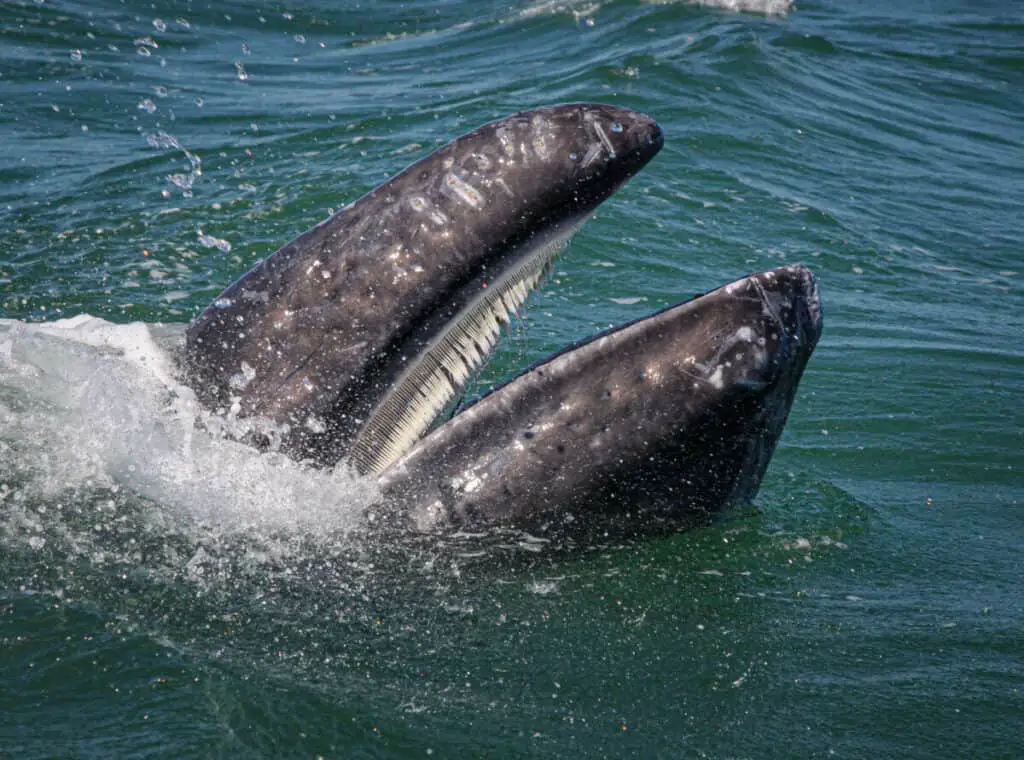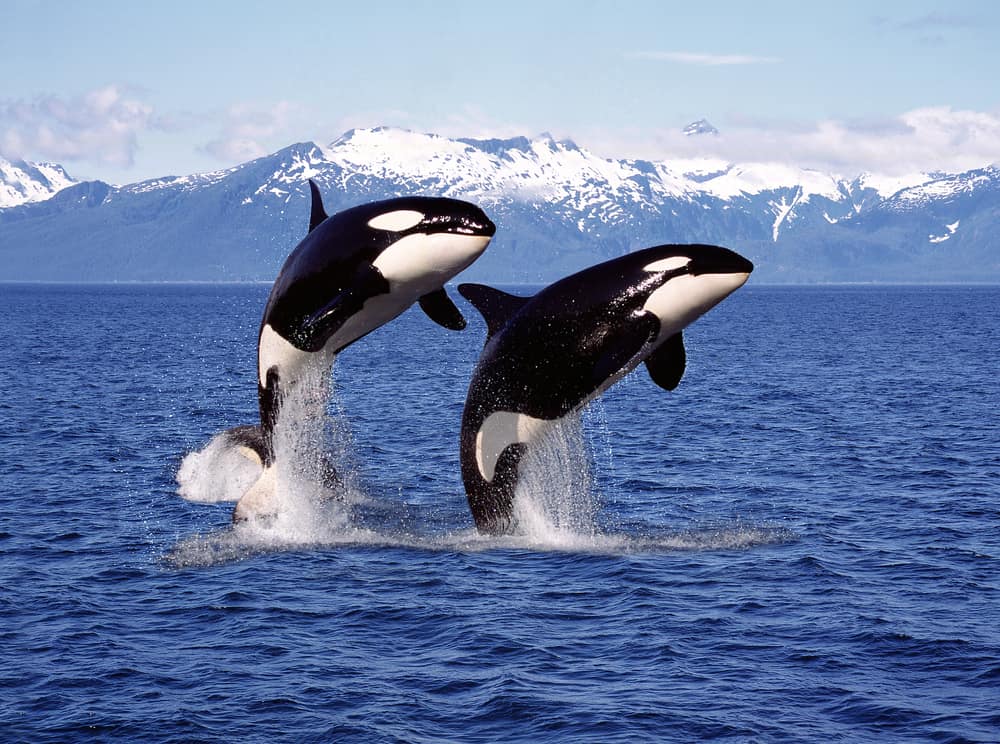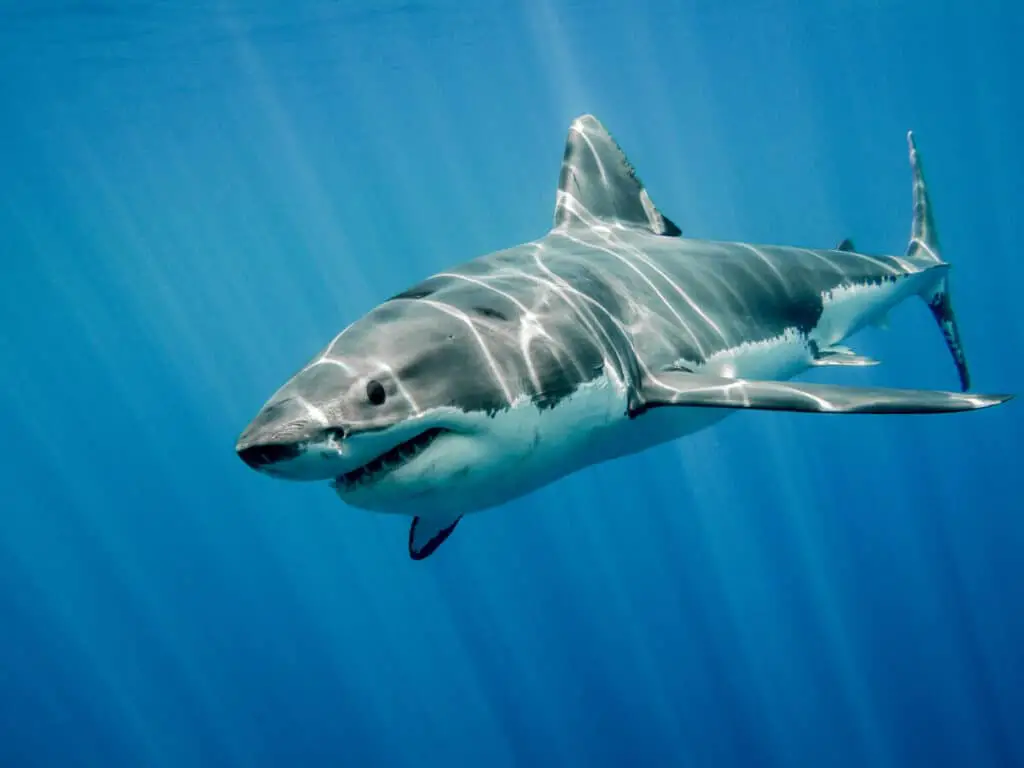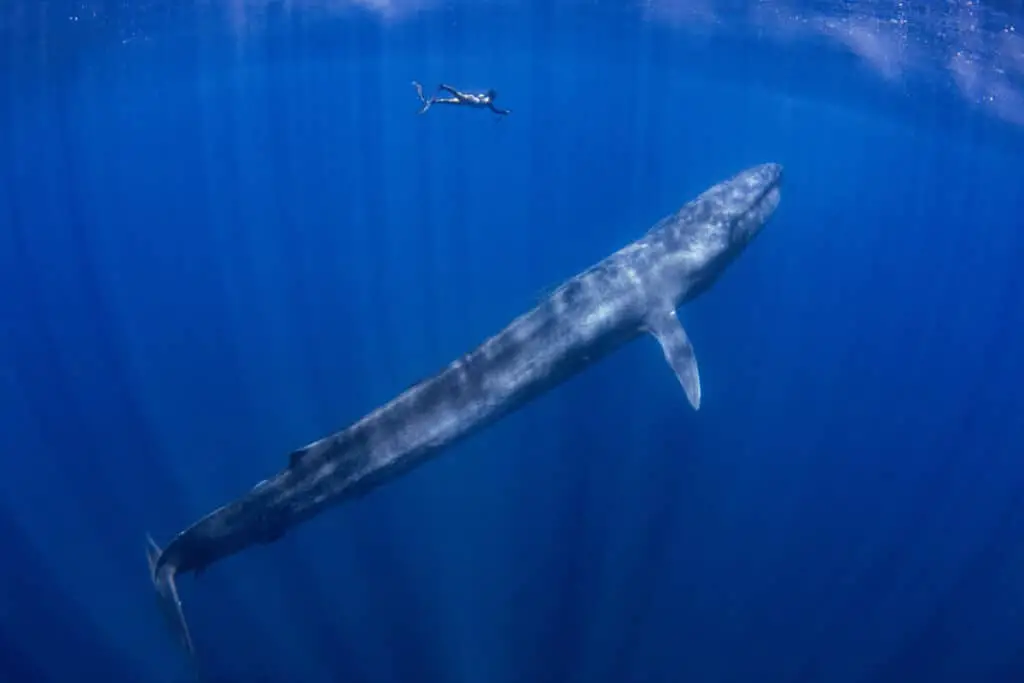Baleen whales are a group of marine mammals that feed on small organisms such as krill, plankton, and fish. Despite their large size and impressive abilities to filter feed, these gentle giants are not immune to predation from other animals in the ocean.
Understanding the predators of baleen whales is crucial for understanding the ecological dynamics of marine ecosystems. The predators of baleen whales vary depending on the species and location, but common threats include killer whales, sharks, such as great whites and tiger sharks, and humans.
Predators can attack through various means including ramming into the whale, drowning it by holding its blowhole shut, biting off fins or flippers, and even attacking calves while they are still nursing. The impact of these interactions between predators and baleen whales has implications for conservation efforts aimed at protecting these magnificent creatures.

Overview Of Baleen Whales
Baleen whales belong to the family Mysticeti and are known for their filter-feeding mechanisms. They have a unique set of comb-like structures in their mouths called baleen plates that allow them to sift out small prey such as krill, plankton, and small fishes from large volumes of water.
Baleen whales come in different sizes with some reaching up to 100 feet long, making them one of the largest animals on earth.
Baleen whales also exhibit remarkable migration patterns where they travel thousands of miles each year between feeding and breeding grounds. During summer months, these marine mammals migrate towards cold waters near the poles while moving back towards warmer waters during winter months.
The feeding habits and migration patterns of baleen whales play significant roles in regulating ocean food webs by redistributing nutrients across great distances through fecal matter excretion.
Gray Whales’ Predators Revealed: Unmasking the Threats
Types Of Predators
Baleen whales, despite their massive size, are not invulnerable to predators. They face several types of threats from both natural and human-induced factors.
The types of predators that target these gentle giants vary based on the species and location.
Some common predators of baleen whales include killer whales (orcas) and large sharks such as great white sharks and tiger sharks. These predators take advantage of different feeding behaviors exhibited by baleen whales, including surface skimming, lunge feeding, and bubble netting.
Killer whales, for example, often work together in groups to separate a whale calf from its mother before attacking it. Sharks may sneak up from below or behind a whale while it is feeding near the surface or follow them during migration routes when they are more vulnerable.
Human activities such as hunting and entanglement also pose significant risks to baleen whales. Whaling was once a major industry worldwide until commercial whaling was banned in 1986 under the International Whaling Commission’s moratorium. However, some countries still practice subsistence whaling with limits set by the commission. Additionally, accidental entanglements in fishing gear also cause injuries or death to many baleen whale populations each year.
It is important to continue monitoring these threats to ensure the conservation of these magnificent animals for future generations.
Harbor Porpoises’ Predators Unveiled: A Closer Look

Killer Whales
Killer whales, also known as Orcinus orca, are the main predators of baleen whales. They belong to the family Delphinidae and can reach up to 9 meters in length and weigh over 6 tons.
Killer whales have a diverse diet that includes fish, seals, sea lions, squid, dolphins, porpoises, and even other marine mammals such as humpback whales.
Killer whales occupy an extensive ecological niche due to their intelligence and unique social behavior. Their hunting techniques involve cooperative strategies where they work together to catch prey. Some populations specialize in hunting specific types of prey like salmon or particular species of marine mammals.
Additionally, killer whale vocalizations vary between different groups with some populations having distinct dialects for communication purposes. Understanding these complex behaviors highlights the importance of preserving this top predator’s population as it plays an essential role in maintaining ecosystem balance.
Humpback Whales’ Predators Unveiled: A Battle for Survival

Sharks
Sharks are one of the top predators in the ocean, and they often prey on baleen whales. As an apex predator, sharks have been known to attack baleen whales and cause serious injuries or even death. Despite their size advantage, baleen whales are not immune to shark attacks.
Baleen adaptations may provide some protection against shark attacks. Baleen plates act as a filter-feeding system that allows the whale to take in large amounts of water and trap small organisms for consumption while filtering out unwanted debris. This adaptation also makes it difficult for sharks to bite into the soft tissue of baleen whales. Additionally, many species of baleen whales travel in groups which can make them less vulnerable to shark attacks.
However, these adaptations do not completely protect them from being targeted by sharks who are skilled hunters capable of detecting blood and sensing vibrations from great distances.
The average length of a mature Great White Shark is 4 – 6 meters. Sharks detect electric fields produced by living animals across long ranges with electroreceptors located around their head called ampullae of Lorenzini. A single bite from a Great White Shark can deliver over 4000 pounds per square inch (psi) of pressure.
Blue Whales, which are the largest animal ever recorded on Earth, feed primarily on krill and other planktonic animals using baleens just like other species of baleen whales commonly attacked by sharks.
In summary, despite having certain physical advantages such as baleen adaptations and traveling in groups, baleen whales still face dangers when interacting with sharks. While there is no foolproof way for these massive creatures to avoid becoming prey for hungry sharks, evolution has provided some means for them to survive in this dangerous environment.
Human Threats
It is not only natural predators that pose a threat to baleen whales, but also human activities. One of the major threats facing these gentle giants is accidental entanglement in fishing gear. This can lead to serious injury or even death, with estimates suggesting that this happens to thousands of whales every year worldwide.
To combat this issue, various measures have been put in place to reduce the risk of entanglement. These include changes in fishery management practices and regulations requiring fishermen to use specific types of equipment that are less likely to harm marine mammals. Additionally, education programs have been implemented to raise awareness among fishermen about how they can help prevent whale entanglements (e.g., by reporting sightings of whales near their fishing grounds).
While these efforts have had some success, more work needs to be done if we want to ensure the continued survival of baleen whales and other marine species threatened by human activities.
Threat reduction continues to be an ongoing concern when it comes to protecting baleen whales from human activities. With further research and improvements in fishery management practices, it may be possible for us as humans to coexist peacefully alongside these magnificent creatures without causing undue harm or disruption.
By taking steps now toward responsible environmental stewardship, we can help preserve our planet’s rich biodiversity for future generations while ensuring that all life on Earth thrives together in harmony.
Methods Of Attack
When it comes to baleen whale predation, a common misconception is that their immense size and strength make them invulnerable. However, several predators have evolved unique hunting strategies to take down these giant marine mammals.
One such predator is the killer whale or orca. With a powerful bite force of up to 19,000 Newtons, they are capable of inflicting fatal injuries on even the largest baleen whales. Orcas often work in groups, using coordinated attacks to separate their prey from the safety of its pod before delivering a series of bites to weaken and exhaust it.
Other predators include sharks such as the great white shark and tiger shark which use ambush tactics to surprise their prey by attacking from below with incredible speed and precision.
In conclusion, while baleen whales may be some of the largest creatures in the ocean, they are not immune to attack. Predators like killer whales and sharks have developed specialized hunting techniques that allow them to overcome even these massive beasts. Understanding these interactions between species can provide valuable insight into the delicate balance of life within our oceans.

Conservation Implications
The predation of baleen whales is a natural and integral aspect of the marine ecosystem. These gentle giants are hunted by a variety of predators, including killer whales (Orcinus orca), great white sharks (Carcharodon carcharias), and occasionally polar bears (Ursus maritimus). While these animals pose a threat to baleen whale populations, they also play an important role in regulating their numbers.
However, human activities have had significant impacts on ecosystems that have led to declines in many whale species. Overfishing, pollution, climate change, and habitat destruction have all contributed to the decline of baleen whale populations worldwide.
The loss of these keystone species can have cascading effects on entire ecosystems, affecting everything from phytoplankton productivity to commercial fisheries. Conservation efforts aimed at protecting these magnificent creatures not only benefit the whales themselves but also promote sustainable tourism and support healthy marine environments for generations to come.
Conclusion
Baleen whales are one of the largest animals on earth, but despite their size, they have several predators. Killer whales (Orcinus orca) and sharks are commonly known to prey upon baleen whales. Other human threats such as hunting and entanglement in fishing gear also pose a significant danger.
Killer whales use coordinated hunting strategies to take down baleen whales, while some shark species prefer to target calves. Human activities such as overfishing and pollution can also indirectly harm baleen whale populations by reducing their food sources or damaging their habitats.
Conservation efforts aimed at protecting these majestic creatures from both natural predators and human impacts are crucial for ensuring their survival. The diverse range of predators that threaten baleen whale populations highlights the need for continued conservation efforts.
The complex interactions between predator-prey relationships underscore the significance of understanding these ecosystems holistically. Protection measures must be implemented to safeguard not only baleen whales but also other marine life dependent on them for survival.
Ultimately, preserving biodiversity is essential for maintaining healthy oceans and a sustainable planet for future generations.

